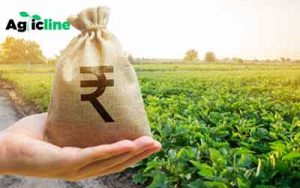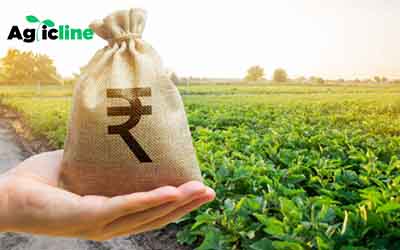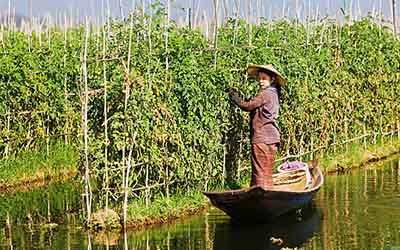There are different problems faced by farmers in getting loans all over the world. Well, in this invaluable piece, I will be showing you these challenges and the best way to get the financial support you need as a farmer.
Agriculture stands as the backbone of economies worldwide, serving as the primary source of food, income, and employment for a significant portion of the global population.
This sector not only feeds billions but also plays a crucial role in sustaining rural communities and contributing to national GDPs.
At the heart of this indispensable industry are the farmers, the stewards of the land, who toil tirelessly to plant, nurture, and harvest crops that feed nations and fuel economies.
Their role is pivotal, not just in the agricultural chain but in the broader economic landscape, ensuring food security and supporting the livelihoods of communities far and wide.
However, the journey of farming, from seed to harvest, is fraught with uncertainties and challenges. Weather conditions, pests, market fluctuations, and technological advancements demand continuous adaptation and investment.
It is here that financial support becomes critical, acting as a lifeline for farmers striving to sustain and expand their operations.
Access to loans and financial services enables farmers to purchase seeds, equipment, and other essential inputs, invest in infrastructure improvements, and adopt innovative practices that enhance productivity and sustainability.
Despite the vital importance of financial support, securing loans remains a daunting challenge for many in the agricultural sector.

Problems faced by farmers in getting loans
- Agricultural Landscape
- High-Risk Perception and Its Implications
- Lack of Collateral and Credit History
- Bureaucratic Hurdles and Documentation
- Limited Access to Financial Institutions
- The Interest Rate Dilemma
Understanding the Agricultural Landscape
The agricultural landscape is as diverse as the crops it produces, encompassing small family-run farms, large-scale agribusinesses, and everything in between.
Each type of farming operation has its own unique financial needs, from the smallholder farmer seeking to buy seeds and fertilizers, to the large agribusiness looking to invest in cutting-edge technology and expand its market reach.
Despite these differences, all farmers share a common goal: to increase productivity and ensure the sustainability of their operations.
Agriculture is inherently tied to the seasons, dictating the rhythm of planting, growing, and harvesting. This seasonality impacts not only the physical work of farming but also financial planning and the ability to repay loans.
Farmers must carefully manage their resources, planning for income that is often seasonal and unpredictable due to factors beyond their control, such as adverse weather conditions or market price fluctuations.
The financial needs of farmers are not limited to the planting season; they extend throughout the year, covering equipment maintenance, infrastructure improvements, and the adoption of sustainable farming practices.
Access to financial services and loans is crucial for meeting these needs, enabling farmers to invest in their operations, mitigate risks, and respond to market demands.
High-Risk Perception and Its Implications
The perception of agriculture as a high-risk sector is a significant barrier to farmers seeking loans and financial support.
This perception stems from a variety of factors intrinsic to farming, including its dependency on weather conditions, vulnerability to pests and diseases, and exposure to market price volatility.
- Weather Dependency
Agriculture’s reliance on favorable weather conditions places it at the mercy of the elements. Droughts, floods, and extreme weather events can devastate crops, leading to poor harvests and significant financial losses for farmers.
This vulnerability makes lenders cautious, as a single bad season can jeopardize a farmer’s ability to make loan repayments.
- Pest Infestations and Diseases
Crops are also susceptible to attacks from pests and diseases, which can spread rapidly and reduce yield. Despite best management practices, these biological threats can cause unforeseen losses, further adding to the sector’s risk profile.
- Market Fluctuations
The agricultural market is characterized by price fluctuations, driven by changes in supply and demand, trade policies, and global market trends. Farmers selling their produce face variable incomes, making it challenging to predict cash flow and ensure consistent loan repayment.
- The Impact on Loan Terms
Given these risks, banks and financial institutions often impose stringent conditions on agricultural loans, including higher interest rates to offset the perceived risk.
Lack of Collateral and Credit History
Access to credit is a cornerstone of business growth and sustainability, yet for many farmers, particularly smallholders and those new to the industry, the lack of collateral and a robust credit history stands as a formidable barrier to securing loans.
This challenge is twofold, impacting not only the farmers’ ability to obtain financing but also the terms and conditions of the loans available to them.
- The Collateral Challenge
Collateral serves as a lender’s safety net, offering a form of security that can be claimed in the event of a borrower’s default. For many farmers, the primary asset available as collateral is their land.
However, issues such as unclear land titles, small landholdings, and the reluctance of financial institutions to accept agricultural land as collateral complicate the situation.
- Credit History Hurdles
A solid credit history is another critical factor that banks consider when evaluating loan applications. It provides a snapshot of a borrower’s financial behavior and repayment capacity.
Unfortunately, many farmers, especially those operating on a small scale or those new to farming, lack a formal credit history.
This absence of a financial track record can be attributed to a reliance on informal lending sources, the use of cash for transactions, and a limited engagement with formal banking services.
Navigating the Challenges
Addressing the lack of collateral and credit history requires innovative solutions that recognize the unique context of the agricultural sector.
- Alternative Collateral Models: Developing lending models that accept a wider range of assets as collateral or that leverage community-based approaches to guarantee loans.
- Credit Scoring Innovations: Utilizing non-traditional data to assess creditworthiness, such as utility payments, mobile money transactions, and even social media activity.
- Government and NGO Support: Implementing programs that provide guarantees or subsidies to reduce the risk for lenders, encouraging them to offer more favorable terms to farmers.
Bureaucratic Hurdles and Documentation
The path to securing agricultural loans is often fraught with bureaucratic hurdles and extensive documentation requirements, making the process daunting and inaccessible for many farmers.
These administrative barriers can significantly delay or even prevent farmers from obtaining the financial support they need, further complicating the already challenging task of managing and sustaining a farming operation.
- Navigating the Paperwork Maze
The loan application process for farmers typically involves navigating a complex maze of paperwork, including detailed financial records, business plans, proof of land ownership or tenure, and evidence of past farming performance.
For small-scale farmers or those in developing regions, compiling this extensive documentation can be particularly challenging.
- Lengthy and Uncertain Approval Processes
Even after submitting the required documentation, farmers often face lengthy waiting periods for loan application reviews and approvals. This delay can be detrimental, especially in agriculture, where timing is crucial.
A loan received too late can mean missing the optimal planting season, leading to reduced yields and lost income.
- The Impact of Red Tape
These bureaucratic obstacles not only deter farmers from applying for loans but also contribute to a broader lack of access to formal financial services within the agricultural sector.
The result is a reliance on informal lending sources, which may offer quicker access to funds but often come with higher interest rates and less favorable terms.
Streamlining the Process
Addressing the bureaucratic challenges involved in securing agricultural loans requires a multifaceted approach, including:
- Simplifying Application Procedures
- Digital Solutions
- Capacity Building
Limited Access to Financial Institutions
For many farmers, especially those in rural or remote areas, physical access to banks and other financial institutions represents a significant barrier to securing loans and other financial services.
This limited access can hinder the ability of farmers to apply for loans, manage their finances, and seek financial advice, ultimately impacting the growth and sustainability of their operations.
- Geographical Barriers
In many parts of the world, financial institutions are concentrated in urban centers, leaving rural communities underserved.
The distance to the nearest bank or lending office can be prohibitive, requiring farmers to travel long distances, often at significant cost and time away from their work.
- The Digital Divide
While digital banking solutions offer potential to bridge the gap in physical access, the “digital divide” remains a stark reality.
Limited internet connectivity, lack of digital literacy, and the absence of digital banking infrastructure in rural areas prevent many farmers from leveraging online financial services.
- The Impact on Farmer Financial Inclusion
The consequences of limited access to financial institutions extend beyond the immediate challenge of securing loans.
It affects the overall financial inclusion of farmers, limiting their ability to save, invest, and insure against risks.
Without formal banking relationships, farmers may find it difficult to establish the credit histories necessary for future loans, creating a cycle of financial exclusion.
Bridging the Access Gap
Addressing the issue of limited access to financial institutions requires concerted efforts from multiple stakeholders, including:
- Expansion of Rural Banking Services
- Investment in Digital Infrastructure
- Innovative Financial Products
- Community-Based Financial Solutions
The Interest Rate Dilemma
High interest rates on agricultural loans are a critical challenge facing farmers worldwide, affecting their ability to affordably access credit for their operations.
This issue is particularly acute in the agricultural sector, where margins can be thin, and income is often seasonal and unpredictable.
The dilemma of high interest rates compounds the financial pressures on farmers, making loans less accessible and more burdensome to repay.
Factors Contributing to High Interest Rates
Several factors contribute to the high interest rates charged on agricultural loans, including:
- Perceived Risk
- Operational Costs
- Limited Competition
The Impact on Farmers
High interest rates can severely limit a farmer’s ability to invest in necessary inputs, technology, and infrastructure improvements.
The cost of servicing debt can consume a significant portion of a farm’s income, leaving little for reinvestment or even for covering basic operational costs.
In some cases, this situation can lead farmers into a cycle of debt, where they take out additional loans to cover existing loan payments, further exacerbating their financial vulnerability.
Solutions to the Interest Rate Challenge
To address the high interest rates on agricultural loans, several strategies can be employed:
- Risk-Sharing Mechanisms
- Subsidized Loan Programs
- Financial Education
Best way to get the financial support you need as a farmer
The challenges farmers face in obtaining traditional loans—ranging from high interest rates and stringent collateral requirements to bureaucratic hurdles and limited access to financial institutions—necessitate the exploration of alternative financing solutions.
These innovative approaches can provide the agricultural sector with more accessible, flexible, and farmer-friendly financing options, enabling farmers to overcome financial barriers and support the growth and sustainability of their operations.
Microfinance Institutions (MFIs)
Microfinance institutions offer small loans to farmers who may not qualify for traditional bank loans due to a lack of collateral or credit history.
These loans often come with more flexible repayment terms, tailored to match the agricultural cycle, making them more suitable for small-scale farmers and their unique needs.
Crowdfunding and Peer-to-Peer Lending
Crowdfunding platforms and peer-to-peer (P2P) lending have emerged as viable alternatives for farmers seeking funding.
By directly connecting farmers with individual investors or lenders, these platforms bypass traditional banking intermediaries, potentially offering lower interest rates and more flexible terms.
Crowdfunding can also provide a platform for farmers to showcase their projects and garner support from a broader community.
Government Grants and Subsidies
Government programs offering grants and subsidies to farmers can play a critical role in reducing the financial burden of starting or expanding agricultural operations.
These funds may not require repayment, providing a significant boost to farmers with limited access to other forms of financing.
Such programs can target specific areas of need, such as sustainable farming practices, technology adoption, or infrastructure development.
Agricultural Cooperatives
Agricultural cooperatives can offer their members access to collective financing solutions, including loans with favorable terms.
By pooling resources, cooperatives can negotiate better loan rates for their members and provide a support system for managing financial risks.
Contract Farming
Under contract farming agreements, buyers agree to purchase a certain quantity of produce from a farmer at a predetermined price, often providing the farmer with inputs, technical advice, and financial support.
This arrangement can reduce the financial risk for farmers by ensuring a stable market for their produce and access to credit for operational inputs.
Value Chain Financing
Value chain financing involves financial support provided directly by other actors within the agricultural value chain, such as processors, wholesalers, or retailers.
This type of financing is based on the strength and stability of the value chain relationships and often offers more favorable terms than traditional bank loans.
Advocacy for Inclusive Financial Policies
Advocacy plays a crucial role in raising awareness among policymakers about the specific challenges farmers face in accessing credit.
Stakeholders, including farmer organizations, NGOs, and industry associations, can work together to advocate for policies that support agricultural financing.
This might include lobbying for the reduction of interest rates on agricultural loans, the establishment of credit guarantee schemes, or the creation of specialized agricultural banks.
Policy Recommendations for Enhancing Agricultural Financing
- Establish Specialized Agricultural Banks: Governments could support the establishment of banks specifically focused on serving the agricultural sector, offering products and services tailored to farmers’ needs.
- Implement Credit Guarantee Schemes: To mitigate the perceived risk of lending to farmers, governments and development agencies can set up credit guarantee schemes that provide security to financial institutions against loan defaults.
- Subsidize Interest Rates: Subsidizing interest rates on loans for specific agricultural activities, especially those promoting sustainable and innovative farming practices, can make borrowing more affordable for farmers.
- Simplify Loan Application Processes: Regulatory reforms to simplify and streamline loan application and approval processes can reduce bureaucratic barriers, making it easier for farmers to access credit.
- Promote Financial Literacy and Management Training: Investing in education and training programs for farmers to improve their financial literacy and business management skills can enhance their creditworthiness and ability to successfully manage loans.
- Enhance Digital Financial Services: Policies that encourage the expansion of digital financial services can improve access to financial products for farmers in remote or underserved areas.
- Encourage Private Sector Investment: Incentives for private sector investment in agricultural financing can increase the availability of capital for farmers and stimulate innovation in financial products and services.

Concluding remarks on the problems faced by farmers in getting loans
The path to ensuring that farmers have access to the financial resources they need to thrive is complex and requires a multifaceted approach.
By advocating for supportive policies, implementing targeted programs, and fostering collaboration among all stakeholders, significant progress can be made in overcoming the financial barriers facing the agricultural sector.
Through collective effort and commitment, it is possible to create a more equitable and sustainable financial ecosystem for farmers, thereby securing the future of agriculture and food security for generations to come.
The challenges faced by farmers in accessing loans and financial support are multifaceted, stemming from high-risk perceptions, collateral and credit history requirements, bureaucratic hurdles, limited access to financial institutions, and prohibitive interest rates.
These obstacles not only hinder the ability of farmers to sustain and expand their operations but also pose significant risks to global food security and economic stability.
Recommendations
5 Top Challenges faced by farmers in India
8 Difference between gardening and farming
Disadvantages of rotational grazing
What are the 10 problems of agriculture?



